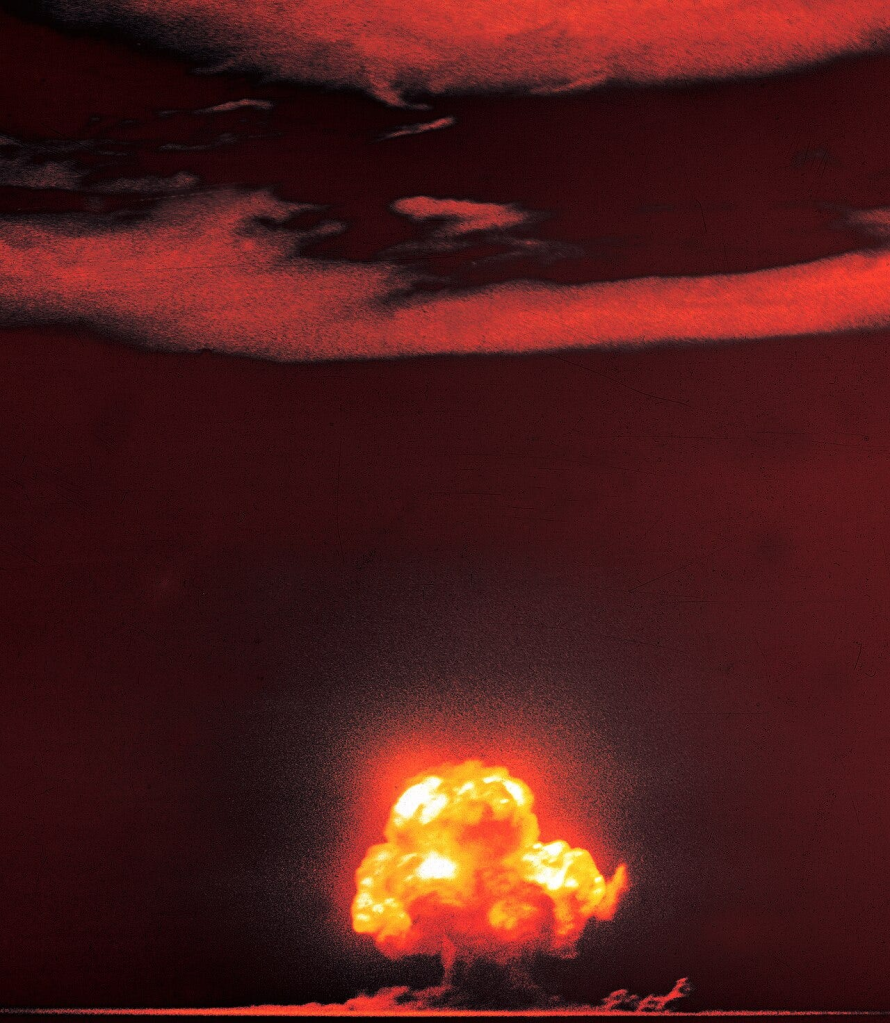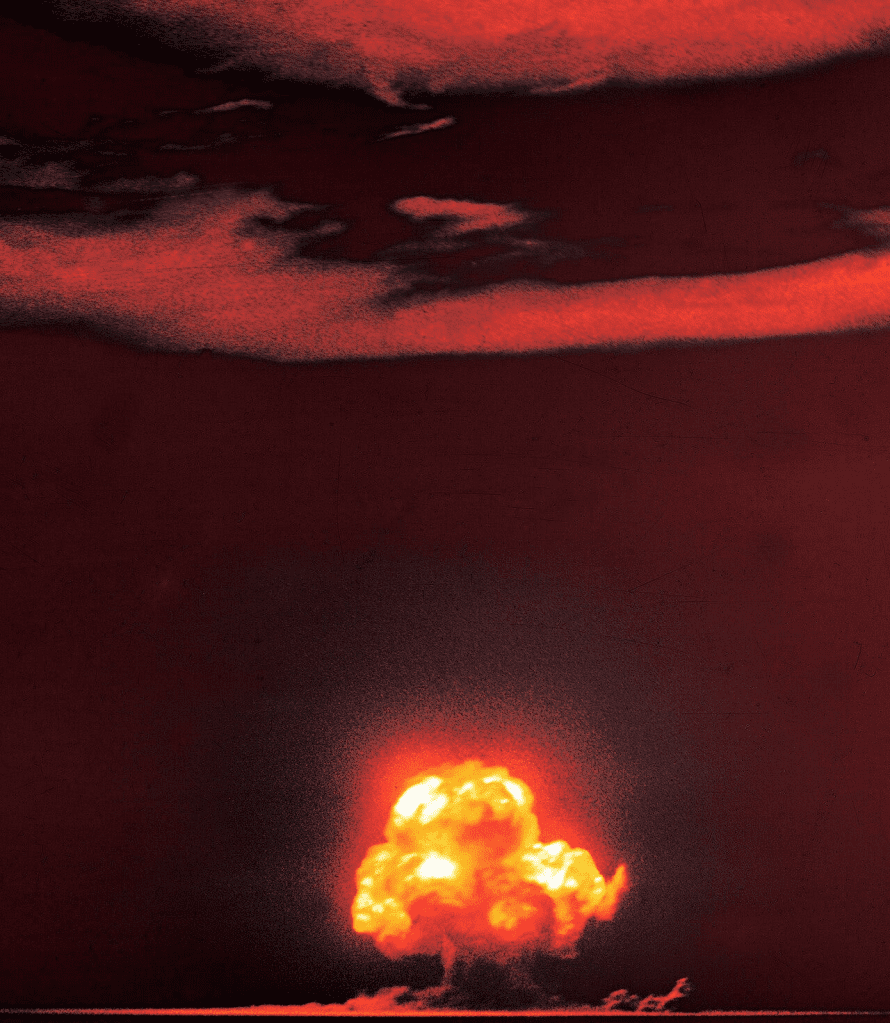BOOM BOOM BOOM

In researching this article, I spoke to crews of B-52s, B-47s and Vulcans and even chatted on a train with a nuclear scientist. The scientist was more alarmed by the risks of an accidentally dropped nuke than were the Air Force people, so make of that what you will.
“Broken Arrow is a code phrase that refers to an accidental event that involves nuclear weapons, warheads or components”

A honeybee typically dies after stinging because its barbed stinger gets lodged in the skin of its opponent. When the honeybee tries to fly away, it ruptures its abdomen and internal organs, killing it. Not to be outdone, humans developed a form of self-defence that could potentially kill all humans and make entire regions or even the whole planet uninhabitable. So far, so spicy, but not spicy enough.


To make this enterprise even more exciting, nukes were carried by utterly inappropriate aircraft with deeply concerning crash rates. With 32known Broken Arrow incidents, each with the risk of accidental detonation (see below), contamination or theft of nuclear devices, the apocalypse almost came to town riding a flaming clown car. Here are 10 of those clown cars.
10. Boeing B-47 Stratojet

I asked former B-47 pilot Colonel G. Alan Dugard (Retired) what B-47 pilots were most afraid of
“Loss of an outboard engine on take off. This caused a number of take-off accidents. Two at my home base in New Hampshire and others at other locations. It was discovered that the pilots’ reaction to this was to use aileron movement to correct the loss of direction control. Photos later discovered the problem was exacerbated by the use of aileron and resulted in a situation called “Roll due to Yaw”. Correction of only rudder would correct the roll.”

Then, there were the cataclysmic structural problems. 58 B-47s were lost in only two years, 27 in 1958 alone. Over its lifetime, 203 B-47s were lost in crashes, resulting in 464 deaths. Across 3,725,585 flying hours, 288 aircraft were involved in Class A mishaps. Which, as abysmal as it sounds, is pretty much the gold standard for safety for a first-generation jet aircraft. Unfortunately, a big chunk of the ten per cent of the fleet that did meet fiery ends carried nukes. On 10 March 1956, one just disappeared in the Med. It wasn’t carrying a bomb, but was carrying ‘nuclear capsules’. A nuclear capsule is a small, sealed container holding a radioactive material, which can be dangerous if handled improperly (like being dropped into the sea in a bomber, for example).

Around five months later, on 27 July 1956, a B-47 slid off the runway during a touch-and-go landing and smashed into an igloo full of nuclear weapons.

Losing a nuke in the sea is one thing, but in 1958, a USAF B-47 dropped a nuclear weapon on South Carolina. It started 25 minutes after takeoff. Captain Bruce Kulka, was ordered to the bomb bay area after the captain of the aircraft, Captain Earl Koehler, noticed a fault light indicating that the bomb harness locking pin had not engaged. As Navigator and Bombrdier, Kulka was sent into the bomb bay to insert a locking pin into the bomb shackle to prevent accidental release. The bomb bay and its access were so confined that the Navigator had to take off his parachute. After climbing onto the bomb while trying to locate the right place to put the pin, he accidentally released it. This left him and the bomb on the sheet metal bomb bay doors, which opened almost immediately after. Although the bomb dropped, the Navigator somehow found his way back into the cockpit. The bomb hit the ground, and its conventional high explosives detonated, damaging buildings and killing six people. The Air Force was sued by the victims, who received US$54,000 (600,000 in 2025 dollars). The lead-up to what became known as the 1958 Mars Bluff tragedy inspired the penultimate scene in Dr Stranglove.
Hush-Kit Aviation Newsletter is a reader-supported publication. To receive new posts and support my work, consider becoming a free or paid subscriber.
During a night practice exercise in 1958, an F-86 fighter collided with a B-47 carrying a 7,600-pound (3,400 kg) Mark 15 nuclear bomb. Fearing a crash, the B-47 crew jettisoned the bomb off the coast of Tybee Island, Georgia. The B-47 recovered back to base. After unsuccessful searches, the weapon was declared lost. Later investigations found freakishly high radiation levels in the Wassaw Sound bay area.

9: Boeing B-52 Stratofortress

Operation Chrome Dome (1961 to 1968) was akin to a man protecting his garden from his neighbour by walking around with a rucksack full of TNT, smoking a cigar, 24 hours a day, drunk, and hoping nothing went wrong. Except instead of a man with a sack of TNT, it involved actual B-52s loaded with thermonuclear bombs on continuous airborne alert. The United States Air Force maintained up to 12 nuclear-armed bombers airborne 24 hours a day. In a move that almost anyone could have predicted, it went horribly. It took a mere five Broken Arrow events to kill the operation.

On October 15, 1959 Sarah Ferguson, former wife of disgraced British Prince Andrew and author of Budgy the Helicopter, was born. Ukrainian nationalist Stepan Bandera was murdered in Munich by Soviet KGB agent Bogdan Stashinsky with a hydrogen cyanide gas gun shot into Bandera’s face. Meanwhile..




